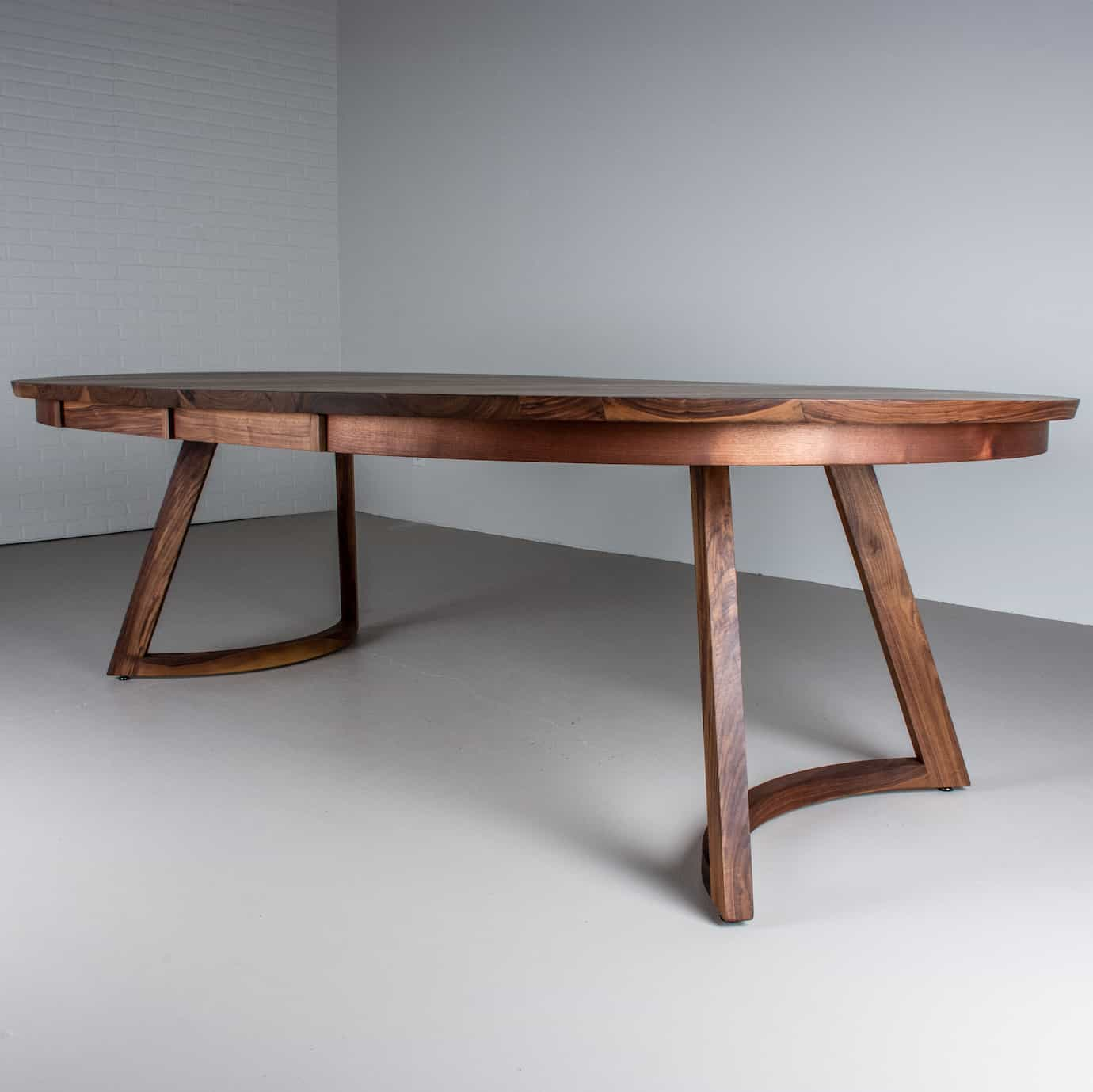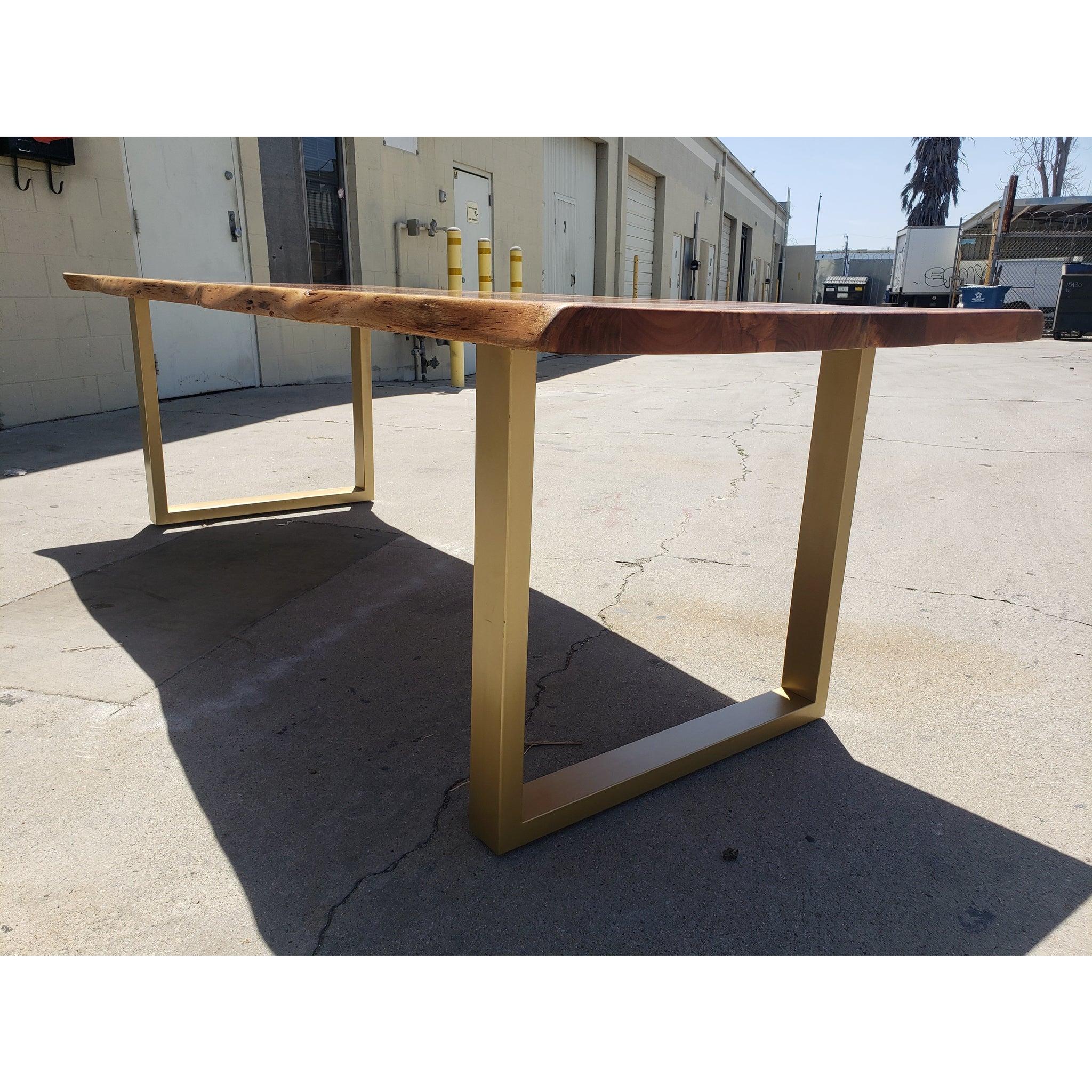Change Your Furniture with Costs Dining Table Legs Wood Options
Wiki Article
Trick Factors to Remember for Table Legs Timber Choices
When selecting timber for dining table legs, a number of essential elements require mindful factor to consider to ensure both functionality and aesthetic charm. The option of timber type, defined by its longevity and unique grain patterns, plays a pivotal function in the general style and durability of the piece.Wood Types and Attributes
When selecting wood for eating table legs, it is vital to recognize the distinct qualities of different wood types. Different woods offer distinct advantages and drawbacks, affecting both the durability and aesthetic charm of the ended up product.Hardwoods, such as maple, oak, and cherry, are frequently liked for their stamina and resistance to use. Oak, known for its remarkable sturdiness, additionally includes a popular grain that can include character to the table. Maple provides a smooth surface and is much less susceptible to bending, making it a trustworthy option for functional furniture. Cherry timber, with its abundant color that deepens in time, supplies a luxurious appearance but might call for even more maintenance to stop scratches.
On the other hand, softwoods like want and fir are a lot more economical and less complicated to collaborate with, yet they are less durable than hardwoods. Pine is light-weight and includes a cozy, rustic appearance, making it a preferred choice for laid-back eating settings. Nevertheless, it is extra prone to dents and scratches.
Understanding these characteristics will certainly help in making a notified decision to guarantee the legs of the table satisfy both visual and functional needs.
Grain Patterns and Aesthetics
The wood's grain is not merely a visual quality; it imparts a distinct character and appeal to each item. Various wood species exhibit unique grain patterns, varying from the straight lines of maple to the detailed swirls of oak and the striking number of walnut.Additionally, the positioning and scale of the grain can influence the viewed size and beauty of the table. Larger, more obvious grains might provide a bold, remarkable result, while finer, subtler grains can create an improved, downplayed appearance. In addition, the ending up process can additionally boost these patterns, highlighting the natural appeal of the wood and drawing out rich hues.
Ultimately, the selection of grain pattern need to integrate with other layout elements, such as the table top and surrounding furnishings, making sure a natural visual that elevates the dining experience. Thoughtful choice of wood grain not just adds to the table's charm yet likewise reflects the owner's preference and style.
Durability and Stamina
The longevity and strength of eating table legs are paramount factors to consider for making sure longevity and stability in any kind of eating space. Choosing the appropriate timber is vital, as various types show differing degrees of durability.
Inevitably, spending in high-grade wood and robust construction techniques will yield a dining table that stands the test of time, while providing a reputable foundation for numerous meals shared among family and buddies. Prioritizing durability and strength ensures that your table continues to be practical and visually pleasing for many years to come.
Upkeep and Care
Proper upkeep and treatment are important for preserving the toughness and stamina of dining table legs made from wood. Regular cleansing is necessary; utilizing a soft, damp fabric ensures go right here that dirt and debris do not collect, which can result in scratches and dullness. It is advisable to stay clear of severe chemicals or rough products that might damage the coating.Additionally, applying an appropriate wood gloss or wax periodically can aid keep the luster and secure the wood from wetness and spills. However, it is crucial to comply with the supplier's suggestions concerning the kind of product to make use of, as specific finishes may respond adversely to details chemicals.
Humidity and temperature fluctuations can likewise affect wood table legs, creating them to warp or crack. It's best to position the table far from straight sunlight and heat sources. If the table legs have any kind of dents or scrapes, addressing these immediately can avoid more damages.
Lastly, periodically moved here evaluating the joints and screws for rigidity is necessary to maintain architectural stability (Dining Table Legs Wood). By sticking to these upkeep methods, property owners can guarantee their wooden table legs continue to be attractive and practical for many years ahead
Ecological Factors To Consider
When picking wood for eating table legs, it's important to take ecological factors to consider into account. The sourcing and sustainability of timber are extremely important in lessening ecological effect. Choosing timber from qualified resources, such as those endorsed by the Forest Stewardship Council (FSC), makes sure that the hardwood is collected sensibly, promoting woodland conservation and biodiversity.
Moreover, regional sourcing of timber reduces transport exhausts, sustaining regional economic situations while lessening ecological influence. It is additionally advisable to be knowledgeable about the wood's treatment and ending up procedures, as particular chemicals can be harmful to both human wellness and the setting. By focusing on lasting wood choices, more consumers can add to ecological conservation while delighting in the longevity and elegance of their table legs.
Final Thought
In final thought, picking wood for eating table legs demands cautious consideration of numerous aspects, including wood types, grain patterns, and longevity. The visual appeal of one-of-a-kind grain patterns can improve the total design, while the strength of woods guarantees longevity. Upkeep demands and environmental sustainability more influence wood selections, highlighting the importance of sourcing from accredited or recovered materials. An educated selection procedure ultimately adds to a visually enticing and functional eating space that aligns with lasting methods.When selecting timber for dining table legs, a number of crucial aspects call for cautious factor to consider to make certain both capability and visual allure.Proper maintenance and treatment are important for maintaining the resilience and stamina of eating table legs made from timber.When selecting wood for dining table legs, it's crucial to take ecological considerations into account. By focusing on lasting timber choices, consumers can contribute to environmental preservation while appreciating the resilience and appeal of their eating table legs.
In final thought, selecting wood for dining table legs necessitates careful consideration of different aspects, consisting of timber types, grain patterns, and durability. Dining Table Legs Wood.
Report this wiki page